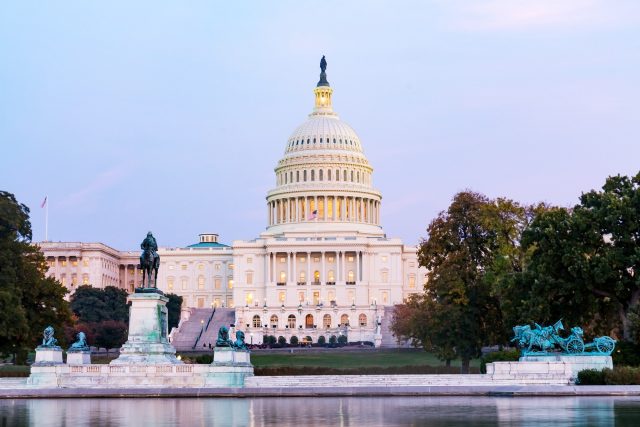
If 100 Senators Do Nothing, 39 Million Private Sector Workers Will Gain
Alicia H. Munnell is a columnist for MarketWatch and senior advisor of the Center for Retirement Research at Boston College.
The Senate should not throw sand into the wheels of the state Auto-IRA initiatives.
At the risk of making Winston Churchill turn over in his grave, never could so much be owed by so many to so few – for doing nothing. If 100 Senators do nothing, 39 million private sector workers without a payroll-deduction retirement plan will have the unimpeded possibility of a state-initiated automatic retirement savings program.
For the last forty years, a snap-shot of the private sector labor force has shown that about half of workers are not covered by an employer-sponsored retirement program. Many of these workers work for small firms and are lower paid. Some workers may pick up some coverage along the way, but many end up at retirement with only Social Security.
Having to rely on Social Security would be fine if the program provided an adequate retirement income. Although Social Security’s progressive benefit formula is designed to replace a higher proportion of the earnings of the lower paid than the higher paid, many lower paid workers claim benefits at 62 – as opposed to the Full Retirement Age (currently 66) – and their benefits are actuarially reduced to keep the value of lifetime benefits the same regardless of claiming age. Early claiming offsets the progressivity of the benefit formula, leaving many lower paid with a meager retirement income.
Recognizing this problem, in 2006, Mark Iwry of the Brookings Institution and David John of the Heritage Foundation proposed an Auto-IRA program for workers without an employer plan. President Obama included this proposal in his annual budgets, but Congress never enacted any legislation.
With no action at the federal level, several states – California, Connecticut, Maryland, Illinois, and Oregon – have stepped into the breach to create their own Auto-IRA program. Early on, the states wanted to clarify the legal status of these plans. IRAs had not typically been a workplace-based plan, so the states wanted to know whether these plans would be covered by the Employee Retirement Income Security Act (ERISA). While ERISA offers valuable protections – which the states plan to mimic – it also imposes fiduciary and paperwork burdens on employers.
The Department of Labor – after a year of study, proposing rules, and reviewing comments – issued final regulations in 2016 saying that the state programs would not be covered by ERISA if the plans were “voluntary” – a slight change relative to the “completely voluntary” wording in the original 1975 safe harbor for IRAs. Automatic enrollment with the right to opt out is considered voluntary under the new rule in the context of a state auto-IRA. With the clarification, the states proceeded. Oregon should have a program up and running by the end of this year.
Now some members of Congress – prodded by some in the financial services industry who envision offering this customer base what they view as a superior product – are trying to overturn the 2016 clarifying regulation under the Congressional Review Act, which allows Congress to undo recent regulations with a simple majority vote.
The House has already voted to revoke the rule. The Senate has not taken up the issue. It must do so within 60 “Congressional days” (days when the Congress is in session) of the issuance of the regulation. The clock resets if a session of Congress ends before the 60 days have elapsed.
I urge the Senate to do nothing. Auto-IRA accounts are not a partisan issue – the original design grew out of joint work by the Brookings Institution and the Heritage Foundation. Uncovered workers need additional retirement saving. If 100 Senators do nothing, 39 million private sector workers will gain.







